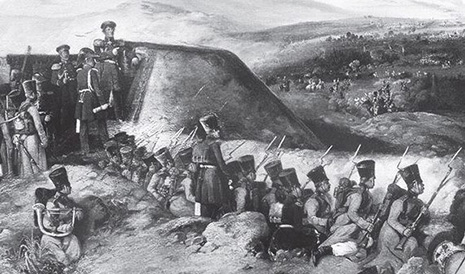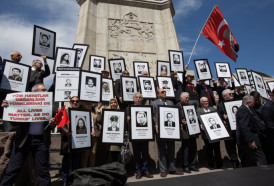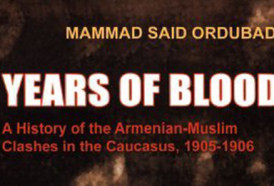Historical evidence shows the whole truth about what really happened, and this reality must be admitted by the international community. Otherwise, ensuring stability in the Caucasus will be impossible. Making public Russian archive documents can change many things with respect to this issue. These documents really have very precious material about the resettlement of Armenians in the Caucasus.
These events, which at first glance seem mysterious, can be easily and logically explained. It turns out that a repulsive policy lies behind these events, which sometimes are presented as “Armenian heroism”. Against this background, the Azerbaijani people`s determination, their remarkable endurance to blows from different sides and their ability to protect their Motherland is a historical fact.
It is political interests of empires that stand behind the emergence of “the Armenian case”. It would not be right to link this to Armenians` love of revolutions and freedom. Throughout history Armenians have been trying to seize the opportunity provided by others. In the Caucasus, a first such opportunity emerged on November 10, 1724 when Russian Tsar Peter the Great signed an edict on Armenians` resettlement here.
In his letter to Alexander Rumyantsev, Peter I wrote: “The Armenian parliamentarians turned to us to protect them from their enemy. If we are not capable of doing this, then we should allow them to resettle in the provinces, which we seized from Iran. We let them resettle in our Caspian littoral areas, and issued a relevant edict in their favor and for their satisfaction. If Turks raise this issue with you tell him that we did not call Armenians here, but that they asked us to take them under protection because we belong to a common religious confession. For the sake of Christianity, we could not reject the request of Christian Armenians…”
The Russian Tsar puts everything very concrete – Armenians, which will help him maintain his power in the south Caucasus, must be resettled in Azerbaijan`s lands. And this must be done in such a way that Armenians remain thankful and attached to the Empire forever. To achieve this, they presented Muslims as Armenians` enemies, and promised to help Armenians build their own state. This could be done only through establishing rebel groups consisting of Armenians to keep the region under constant threat.
These points were highlighted in the Tsar-issued documents and orders on the resettlement of Armenians in Caspian littoral lands. One of those documents notes: “We take you under our Imperial protection with your families and relatives, and ordered allocation of favorable lands along our newly-invaded Iranian provinces for you to live in peace and serve Christianity. In another Imperial edict, Peter the Great convinced Armenians that they would be allocated favorable places, accepted with kindness and regarded with favor in Baku and other areas just like in Gilan and Mazandaran”.
Peter I`s death calmed things down, and Russia refocused on strengthening its policy in the Caucasus only after Catherine the Great took power (3). Plans to create an Armenian state on Azerbaijani lands took topicality, but they were spoiled by the Russo-Turkish War. Early 19th century saw the threat re-emerge in the South Caucasus on a larger scale.
In the Turkmenchay Treaty of 1828, “the Armenian case” was stipulated in a separate article: “A year`s time to be assigned from this day to those officials and citizens (Azerbaijanis – author) that must move from Iran to Russia with their families, to carry their movable property without any prevention of the government and the supremacy without any tax on their property or things for sale. As to unmovable property a five-year timeframe is assigned for the sale or for its self-disposal…” .
It`s clear that even if Armenians were not concretely named in the treaty, the document provided for their resettlement. The Treaty of Turkmenchay marked the start of mass resettlement of Armenians in the Azerbaijani regions of Nakhchivan, Garabagh, Iravan. Those years did never see Muslim people move to Christian-populated lands. On the contrary, it was Armenians who settled in the lands where Azerbaijanis were living.
The executors – Nerses Astaraketsi, Alexander Griboyedov, Colonel Lazarev and others – were acting according to a premeditated plan. The Russian archive documents bear witness that the resettlement of Armenians in Iravan and Nakhchivan from April 5-June 10, 1828 was a well thought out state plan (1, p.66-141). The archive documents say that 50,000 silver rubles from the funds paid by Iran under the Treaty of Turkmenchay were allocated for the resettlement of Armenians.
This marked a new stage in the Russian Empire`s policy of resettlement of Armenians in the Azerbaijani lands. The executors and those responsible for the process repeatedly warned the Russian leadership against settling Armenians in Russia`s central regions. The reason, according to them, was that Armenians would immediately lay territorial claims to those lands, that is to say, everybody was well aware of Armenians` trait.
The British Empire also played big role in encouraging Armenians to rebel against Muslims. British consuls were setting Armenians against Muslims and Russians. And as soon as Russians realized it, they shifted to the policy of changing the turn of processes in their favor.
Therefore, “the Armenian case” was artificially created at one point of history. Wars have never stopped in this region since Armenians set foot in these places. Strangers to this region, Armenians were brought up in an aggressive spirit towards local people. This is why those who resettled Armenians in the Nagorno-Karabakh bear a historical responsibility for what is going on in the region. The entire region is now tired out by the Armenian terrorism and separatism. Tranquility can be ensured in the Caucasus only if superpowers realize the essence of “the Armenian case”. And this will positively affect the settlement of regional conflicts.
More about:















































